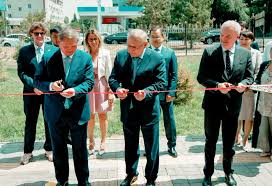UK ‘needs more overseas vets and architects’

London: Migration rules should be relaxed for vets, web designers, psychologists and architects from outside Europe, government advisers have said.
The Migration Advisory Committee says those jobs should be on a list aimed at plugging gaps in the UK labour market.
Jobs which make the Shortage Occupation List (SOL) are effectively allowed to jump the queue for workers from outside the European Economic Area.
The major review said there needs to be a big expansion of jobs on the list.
Under these proposals, the list would cover 9% of jobs in the labour market, compared with approximately 1% currently.
Call to scrap high-skilled migrants cap
Why is there a Shortage Occupation List?
Only workers from the European Economic Area (EEA) – which includes all EU countries including the UK, as well as Norway, Iceland and Lichtenstein – enjoy freedom of movement, travelling and working within the area without visas.
The current scheme for high-skilled non-EEA migrants – known as a Tier 2 visa – allows 20,700 high-skilled workers into the UK each year.
The current salary threshold for such visas is £30,000, and top priority is given to jobs on the ” Shortage Occupation List “.
The MAC recommended there should be a “full review” of the shortage occupation arrangements once it’s clear what the future immigration system will look like.
The government has previously said that after Brexit, people from the EU should face the same immigration rules as those from elsewhere.
The Migration Advisory Committee (MAC) report said that other occupations that were already listed should be extended to cover all roles within the category, including medical practitioners, artists and civil engineers.
Professor Alan Manning, MAC chairman, said: “Today’s labour market is very different to the one we reviewed when the last SOL was published in 2013.
“That is why we have recommended expanding the SOL to cover a range of occupations in health, information and engineering fields.”
Other jobs not currently on the list which the MAC says should be added are occupational therapists, and speech and language therapists.
In Scotland, it says the list should be widened to include chemical scientists and engineers in the nuclear industry, and Scottish Gaelic teachers.
It’s a reminder – an alarm bell even – to government, industry and the education sector about the areas where the UK has a skills deficit.
Some of the labour market shortages, particularly in engineering and health, have existed for decades and are clearly getting worse.
It begs serious questions about the quantity and quality of technical and vocational training in the country – if the right mix of subjects is being covered by universities and colleges, and whether enough thought has been given to planning for the long-term needs of the economy.
These range from Tier 1, preserved for investors and “exceptional talent”, to Tier 5 visas for short-term voluntary and educational programmes.
The two most common are the Tier 2 skilled worker visas and Tier 4 student visas. Currently, no Tier 3 – unskilled labour – visas are being given out.
Some of these visas allow people to apply to bring dependants such as children and partners.
Visas work on a points-based system and the criteria have got tougher in recent years.
For example, for a Tier 2 “experienced skilled worker” visa, people now need to be paid at least £30,000 to apply, up almost £10,000 from 2011. People get more points for higher salaries or if their job is on the list of shortage occupations.
Most visas come with other conditions, including knowledge of English, the need for a sponsor and agreeing not to claim benefits for a period of time.





